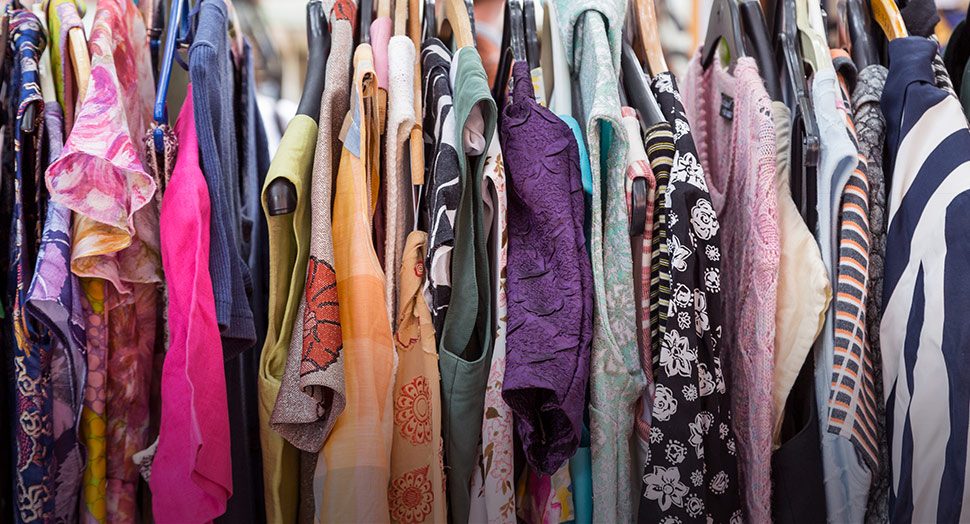When I was younger, I’d save up my allowance until the next trip to our local thrift store. I found that I could get way more books, movies and games by saving up until I went to St. Vincent de Paul, Goodwill or any of the other local thrift stores with my grandparents. I’d come out with tons of new items, some of them actually being brand new and unopened, and I’d still have money left over for anything else I wanted. That frugality has carried over to adulthood, much like other people I know.
I’ve never understood why people are put off by thrift store shopping. Sure, some of the items aren’t brand new, but many of them are very lightly used. What’s the problem with that? If someone is paying full price for brand name clothing and you scored the same clothing for a fraction of that, doesn’t that put you in a better position financially and ultimately make you a smarter shopper? That’s the brilliance of thrift store shopping, or “thrifting.”
What is “thrifting”?
Ever since the release of Macklemore’s song, “Thrift Shop,” thrift store shopping has become a more mainstream way of saving money. Items from thrift stores aren’t really seen as unwanted and used anymore, they’re seen as pre-owned “treasures” many people are finding.
Thrift store shopping has even become its own community. Many people have started calling their hobby different names—“thrifting,” “thrift hauling” and “Goodwill hunting” are all terms that people in the community use as names for thrift store shopping. Most people who go thrifting are on the lookout for fantastic deals on items they really want, and others are looking to make some money on the side.
You can find Facebook Groups, forums and thrift store subreddits that are dedicated to the art of thrift store shopping, and many of these groups are more than happy to welcome you and give some tips on what to look out for. They won’t give away all of their trade secrets, but many of the thrift store hobbyists are more than happy to give pointers to help you when you’re starting out.
Why should you shop at thrift stores?
Your local thrift store does a lot more for your community than you know. Besides having clothing and household items at affordable prices for those with lower incomes, most thrift stores are non-profits that use their funds to help those in need. Goodwill Industries specifically uses about 83 cents out of each dollar on local programs and services for those in need.
St. Vincent de Paul in Baton Rouge provides hot meals to the homeless, elderly and poor. Their shelter and housing program directly affects the homeless in the community. They help those in need find employment, fight substance abuse and get access to education. So when you shop at St. Vincent de Paul, you can be certain that your money is getting put back into programs that directly impact your community.
Not only this, but many of the workers are able to be employed at thrift stores thanks to the revenue generated from the stores’ sales of donated items. Some workers may be disabled and unable to get a job elsewhere. Many of their workers are able to have a better quality of life because they are given this job opportunity.
If you’re still put off by the fact of shopping at a thrift store, think about this: what’s the difference between thrift store shopping and buying items from a garage sale or off of Craigslist or Facebook? The items are all pre-owned and come from someone you probably don’t know. However, when you shop at a local thrift store, you’re getting the same thing, only your money is actually going back into programs that make your city a better place to live.
What kinds of things can you get at thrift stores?
You can find just about anything you’re looking for at thrift stores. They’re actually one of the few retail stores you can go to and find retro or retired items. If you’re tired of items they “don’t make like they used to,” check out what’s in stock at the thrift store. You can find limited edition collectibles, retro electronics and even books signed by your favorite authors in some cases.
Your purchases will also come at a much lower price than your bigger companies. If you’re looking for clothing, you can get new and like-new brand names for only a couple of dollars each. This helps out a ton when you’re trying to stretch a budget. Here is what you can expect to pay for these easily-findable items at a thrift store:
- DVDs and Video Games – $1.99 – $5.99
- Books – $0.99 – $1.99
- Clothing – $0.99 – $5.49
- Electronics – $2.49 – $9.99
- Household Décor – $2.49 – $9.99
Compare these to the prices in any other store, and you’re easily saving hundreds of dollars per year while helping out your local community.
Can you make “thrifting” your side hustle?
Making your thrift store shopping hobby a side hustle is doable, but you’ll need to keep a lot of things in mind. Think of your hobby like a business—don’t go buying items on a “hunch” that they’re going to be expensive and worth a good bit. I prefer to stick to electronics, DVDs, video games and retro collectibles. I’m familiar with prices for many of these items, so that’s what I’m mainly on the lookout for when I go in.
You may not be familiar with prices for those items, and you might be more comfortable with books, jewelry or handbags. If you’re comfortable spotting items that you can sell in those categories, then that should be your focus when trying to make thrift shopping your side hustle.
If you don’t find anything the first or second time around, don’t give up! Consistency is key to finding good items to resell. If at first you don’t succeed—try again! Don’t visit too frequently, though. If you’re looking to make some money, space out your visits so that the store has time to rotate their stock.
After you’ve bought a couple of items and you’re looking to sell them, find the best way for you to sell your items. Find local or item-specific Facebook groups, post the items on Craigslist or set up an eBay or Amazon store. Most thrift store hobbyists prefer to use eBay since you can post the items directly on the website. Keep in mind that if you do sell the item on eBay or Amazon, they’ll be taking a percentage of the money you make.
Is thrift store shopping right for you?
That really depends. If you’re looking for a way to save money on items and want that money to go back into the community, you should really consider shopping at your local thrift store. Not only do your purchases impact the workers, but it gets passed on to directly impact your community programs and services. If you’re looking for a way to make money on the side, thrifting allows you a great introduction to reselling items as a side hustle.
Have you ever gone thrifting? What’s the best thing you’ve gotten from a thrift store? Tell us your stories in the comments below!
Lover of writing, learning and teaching others about new things. Proud foodie. Sometimes I mix all of these subjects together.



